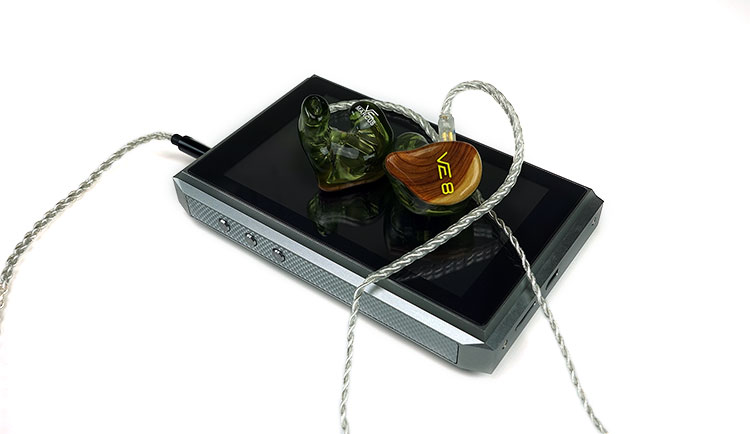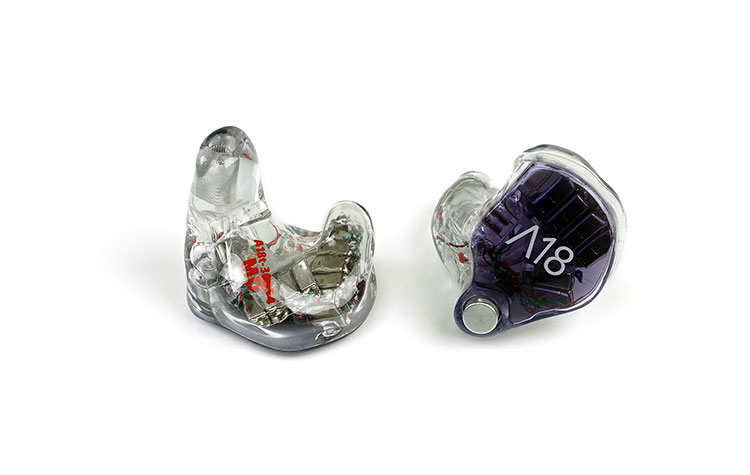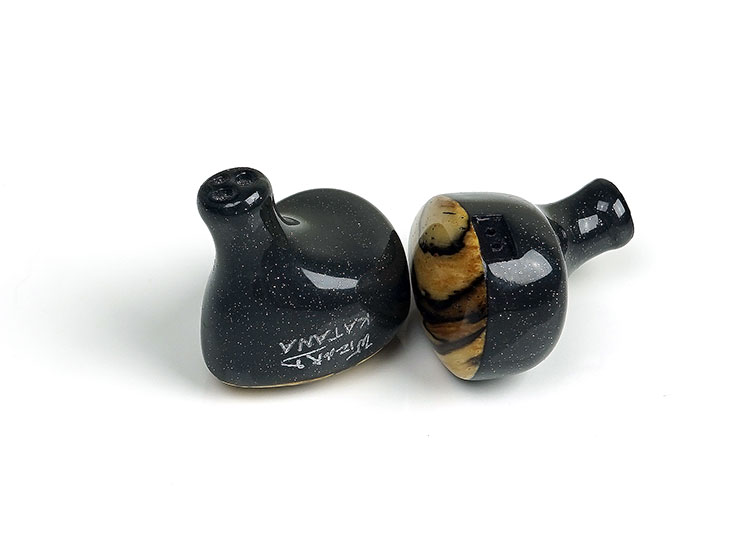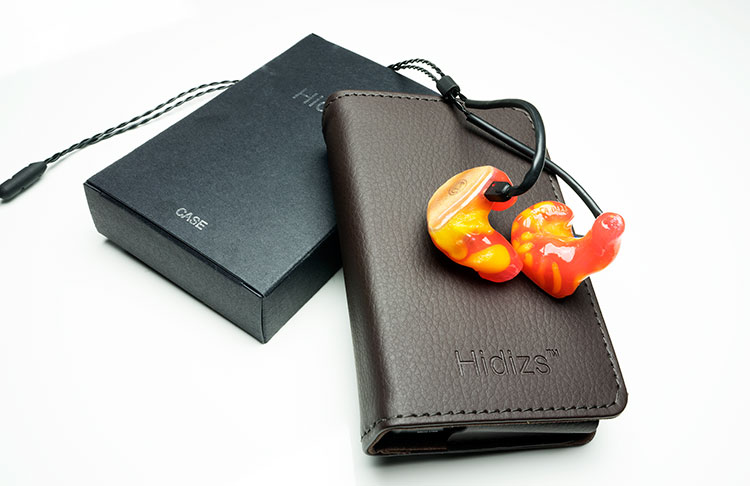Synergy
Efficiency
The VE8 is rated at 20 ohms with a sensitivity rating of 120dB and indeed these are loaded measurements and by all accounts pretty accurate in real-life usage because the VE8 is very easy to drive voltage wise much like the VE6 XControl and the VE5 were before it.
Smartphones
You can get good volume rather easily from smartphones and the dynamics wouldn’t be the worse. On the flip side, it will be more prone to showing up hiss and aggressive volume pots so portable amps will require some considered matching.
I enjoyed the smooth delivery of the VE8 paired with the AK4490 infused ZTE Axon 7 but the digital volume control on the Axon 7 is a bit clumsy and the dynamics are just a bit on the polite side with its weaker amp. I suspect it will sound a lot more convincing on the Onkyo Granbeat or LG V20.
DAPs
The Good
The absolute best pairing in terms of efficiency for the VE8 are good quality DAPs. Here the trade-off between efficiency and dynamics on the VE8 are at their best with the likes of the Lotoo Paw Gold, Opus#3, DX200, and AK380 sounding particularly excellent in terms of noise and voltage control.
Even on the budget end with the likes of the Cayin N3‘s super-low gain setting the VE8 sounded dynamic and dead quiet.
The Meh
FiiO’s were more of a mixed bag with the X5 3rd gen showing up more noise and hiss than the X7 with the Amp1 module but the AM3 and AM2a modules had even higher noise with the AM3 in balanced mode the worst performer. Probably the best compromise was the AM2 or the single-ended AM3 output though not exactly ideal.
Shanling’s flagship M5 was also a noisy pairing with the VE8 with a fairly solid level of hiss that may prove distracting during quieter audio passages but you shouldn’t notice it on EDM or rock.
Noise
The VE8 is fairly sensitive to higher noise floors and big voltage swings and I would put this close to the Andromeda in that respect with regards to detecting background hiss, especially with some portable amps such as the Lear FSM-02 V2‘s Class A output and the ALO Audio V5 which were my nosiest pairings.
Voltage Control
The RHA Dacamp L1 displays a lower noise level with the VE8 than the Lear and the V5 but it is detectable even on low gain where it is not completely clean. Voltage control on the L1 is also very difficult with the VE8, it takes about 2 clicks to hear any audio, then 2 more clicks and it is blasting your head off.
The same could be said also of the ALO Audio Rx and the iBasso D14 though to a lesser degree using the line in. With both of these portable IEM amps, you get about a quarter of the dial-in play before the voltage supply gets overpowering. That being said both have very low noise floors with the D14 having the most pot imbalance between the two with the VE8.
The PB3, also from iBasso also has limited capability in terms of volume pot play with the VE8 though still manageable in single-ended mode. In balanced mode, the noise floor is too high though not as high as the V5.
Mojo
The best pairing both for voltage control and the noise was the Chord Mojo though a word of warning be careful on your smartphone pairing on USB OTG with the Mojo as the VE8 will pick up RF very easily. With the Mojo on OTG USB, the noise level was super low with zero hiss detected.
Volume control had a ton of steps from zero to about 35-40 steps or light red on the Mojo’s orb scheme. You can of course fine-tune on the source side further but you have less control on that side.
Select Comparisons
64 Audio A18
$2999
Technicalities
This is an 18 BA driver CIEM with their special tia driver tubeless driver for treble and the rest for the upper mids, mids, and lows. It is a huge undertaking but one of the best neutral reference CIEM in the market today.
It is not cheap but the design work is accurate, with a pro-fit and good plate designs. The shell designs are more limited than VE though with only 3 choices – transparent, charcoal, and black. The A18 can be bought in a universal format also.
The A18 is rated at a supremely low 9 ohms and a fairly sensitive rating of 116dB but it is not as easy to drive or as sensitive as the VE8. It does require a bit more voltage on most sources to get the best out of it and personally I prefer it with portable DAC/Amps such as the Mojo.
The VE8, on the other hand, will be more sensitive to noise and background hiss on sources compared to the A18 but will not really need a portable amp and sits much more comfortable with high-quality DAPs. Again, the Mojo pairing though is spectacular both in terms of tonal pairing and noise/voltage control.
Tonality
Tonally the A18 is more transparent sounding than the VE8 which stays fairly faithful to its musical signature. The A18 is more reference sounding with a huge soundstage and wonderful airy highs but it is leaner in the low end than the thicker and meatier power generated by the VE8.
The VE8 and A18 are both tight and snappy sounding but I would veer to the VE8 for my rock over the A18 as it simply has the better PRaT for this type of genre.
Both offer a more neutral mid-range but the A18 is just that bit more spacious and reference sounding with a very accurate timbre that works wonderfully well with orchestral and complicated musical passages.
You could turn on a dime with the A18 the imaging and instrumental positioning are that precise. By contrast, the VE8 is a bit more natural sounding with more of a live concert vibe and experience. It is a smoother, richer sound with a slightly more muscular lower mid-range that works really well for guitars crunching than string plucking.
Treble on both is quite different. Both have excellent extension and detail but the VE8 is more laid back in its presentation opting for coherence rather than the sparkling airy headroom the tia driver of the A18 can offer.
Noble Audio Katana
$1850
Technicalities
The Katana is Noble Audio’s latest co-flagship creation and is a 9 BA driver design in universal or custom format depending on your preferences. Costs will be steeper for both Wizard and custom designs. The Katana is very similar in purpose and sound to the A18 with the goal to be a reference precision-based sounding monitor with an eye on neutrality.
As always with Noble technical specs are never revealed but it did come out as marginally easier to drive than the A18 but not as sensitive as the VE8.
Background noise was a little easier to pick up with the VE8 though the VE8 was the easier of the two to drive. The Katana does seem to sound a bit more at home with some portable IEM amps than pure DAPs much like the A18 whereas the VE8 will sound more optimal on slightly weaker amps.
Tonality
However, the Katana is the slightly fussier of the two when it comes to tonal pairings. If you are rocking the universal IEM then tip choice for me is critical.
With the silicone tips, the VE8 has a clear edge in musicality and a natural sound over the somewhat thin and bright Katana. With foams however the Katana comes into its own with a slightly more musical low end and better body than the A18 though it is not as thick and impactful as the VE8.
The Katana is a more reference-type sound than the VE8 and it is airier and more energetic in its treble response giving the perception of more headroom and perhaps greater detail. However, I find the VE8 to be just as detailed but it just takes a slightly more natural and laid-back approach.
Mids on both are more neutral but the VE8 again, like the comparison with the A18, has a richer note and better lower-mid to mid note thickness with an even harmonics bias in its timbre. The Katana timbre is clean and very accurate but with a more prominent upper harmonics quality.
Custom Art Harmony 8.2
€1100
Technicalities
Like the VE8 this is an 8 BA driver custom monitor design. Unlike the VE8 though you can get this in silicone rather than just acrylic and I just love silicone for its comfort factor.
It is also has a better “drop factor” than acrylic. Piotr’s designs are also out of this world with some beautiful candy-style color fusion designs. If VE are the king of the wood plates then Piotr is the mad king of colors. One thing to note is the price of this 8-driver unit, it is almost half that of the VE8 so it is a bit of a bargain contextually speaking.
Whilst both are fairly sensitive IEMs the VE8 is marginally the easier to drive of the two but it is not a huge amount of difference and both will pick up hiss and background noise to roughly the same level on amps and DAPs with higher noise floors than the A18 or Katana.
Tonality
Tonally both are very musical-sounding monitors but they differ a little in emphasis with the VE8 having a significantly more energetic and powerful sub-bass response as well as sounding a little bit more defined than the politer-sounding low-end of the Harmony 8.2.
The Harmony 8.2 in comparison has a full-sounding bass response but it doesn’t have the same level of definition and control so it sounds just a little bit smeared in comparison with a longer decay and a softer attack. It’s just not as precise, powerful, or as dynamic sounding.
Mids on the VE8 are more energetic and engaging than the Harmony 8.2 which also has a fairly smooth delivery but it lacks the same level of resolution and layering and most importantly the dynamics are not quite as good meaning there is a lack of contrast that makes the VE8 a more realistic experience.
Four drivers on the VE8 treble really make everything stand out also. You can clearly hear the difference in detail between both monitors, the contrast between the low-end and treble on the VE8 is just that bit more detailed and vivid sounding than the Harmony 8.2 which sounds a little muted in its lower treble by comparison.
Our Verdict
The VE8 is about as musical and engaging as you can get from a CIEM and it does a masterful job of injecting some serious PRaT into rock and metal. It is one of those rare times I caught myself tapping and nodding away whilst listening to music. It has one of those live concert-type presentations and put a seriously wonderful smile on my face.
Despite the excellence and superb accuracy of the A18 and the Katana, it is the VE8 that caught me draining my DAP batteries dry moving from one album to another. That has to be a good sign.
The VE8 proves that driver count is a load of codswallop when it comes to creating a unique sound with plenty of detail. Yes, once again it is expensive, they almost always are these days but as a flagship, I honestly do not think you can get a better, more natural, or live-sounding emotional experience than the VE8 right now.
If you want pure reference quality there are other CIEM’s out there that fit the bill, but if you need something a bit feistier then the VE8 is a worthy alternative.
Design-wise the new online shop process and the massive amount of shell and plate options is a key strength, not just for the VE8 but for all VE designs. It makes them unique, eye-catching, and always delivered with perfect old-school craftsmanship.
There is a lot to be said about 3-D printing, it is amazingly accurate but the Vision Ear guys are still churning out handmade monitors with top-notch quality.
Technical Specifications
- Technicalities: Three-way-system with eight drivers
- Drivers: 2 x Bass – 2 x Mid – 4 x High
- Sensitivity: 120dB SPL at 1 mW
- Impedance: 22 Ohms ( at 1 kHz)






